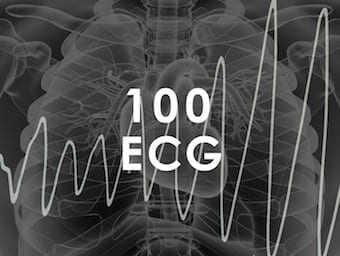
CT Case 009
A 60yo female presents with 2 weeks of dyspnoea, pleuritic chest pain and bilateral calf tenderness. She is worked up for possible pulmonary embolus

A 60yo female presents with 2 weeks of dyspnoea, pleuritic chest pain and bilateral calf tenderness. She is worked up for possible pulmonary embolus

Nils Johan Hugo Westermark (1892 - 1980) was a Swedish radiologist. Westermark sign (1938) of relative oligemia on CXR in pulmonary embolism

Nils Johan Hugo Westermark (1892 - 1980) was a Swedish radiologist. Westermark sign (1938) of relative oligemia on CXR in pulmonary embolism

Lauren Westafer introduces the concept of a new generation of pulmonary embolism (PE). What was once considered a deadly disease process now carries a mortality rate of <3%, which may be driven by overtesting as well as overdiagnosis.

Fleischner sign: prominent dilated central pulmonary artery. Enlargement can be associated with massive embolus enlarging the luminal diameter of the proximal artery in the acute setting; or pulmonary hypertension in the subacute to chronic setting

The Hampton hump is a well-defined pulmonary pleural based opacity representing hemorrhage and necrotic lung tissue in a region of pulmonary infarction caused by acute pulmonary embolism.

Antonio Palla (1949 - ) is an Italian respiratory and nuclear medicine specialist. Palla sign in pulmonary embolus (1983)

This ECG is from a 47 year old female. She presents with acute onset severe dyspnoea. Her vitals signs are BP 95/42; RR 30; sats 88% (room air) Describe and interpret this ECG

The use of thrombolytics for the treatment of submassive PE is controversial — the limited documented benefit (e.g. improved hemodynamics, potential for less chronic pulmonary hypertension) must be weighed against the increased risk of life-threatening hemorrhage and the availability of other therapies (e.g. catheter-directed thrombolysis or clot retrieval)

Pulmonary embolism (PTE, PE) ranges from asymptomatic to a life threatening catastrophe. PE occurs when a deep vein thrombosis migrates to the pulmonary arterial tree

Features that distinguish Pulmonary Embolus from Right Ventricular Infarction

C. H. Joseph Chang (1929 - 2017) was an American radiologist. Chang sign (CXR finding in pulmonary embolus) decribed in 1965